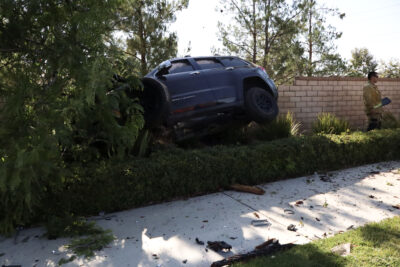Your 12-year-old just clicked a link in a group chat. You’re finishing up remote work from a Santa Clarita café. And your smart doorbell just notified you of a delivery.
We rely on connected tech for everything—from homework to groceries. But all that convenience comes with a price: more of your family’s data is out there, traceable and exposed.
In this article, we’ll walk through local-minded steps you can take to boost online privacy for your household, including helpful tools like IP address checkers and Chromebook VPNs that fit seamlessly into your daily life.
Why Online Privacy Matters for Santa Clarita Families
From the Valencia mall’s public Wi-Fi to school-issued Chromebooks at home, digital exposure is everywhere. Santa Clarita families are increasingly connected, and that connectivity opens the door to risks: identity theft, data tracking, location targeting, and even exploitation of children’s online behaviors.
Many parents assume online threats only affect big-city professionals or tech insiders. But in truth, families in suburban areas like Santa Clarita are often more vulnerable, simply because home networks, smart devices, and kids’ activities don’t get the same scrutiny that corporate systems do.
Protecting your family’s digital footprint isn’t about fear—it’s about awareness and action.
What Your IP Address Reveals About You
Each time you connect to the internet, your IP address tags along—like a digital return address. It tells websites (and potentially third parties) your general location, internet provider, and sometimes even the type of device you’re using.For families with kids online all day and multiple smart devices connected, this can add up to an enormous data trail. Even something as routine as streaming a YouTube video or playing an online game can quietly expose location and activity patterns.
If you’re not sure how visible you are online, it’s easy to find out. Use a simple IP address checker to see what information your connection is currently broadcasting. This is often an eye-opener for parents—and a good teaching moment for kids, too.
Common Online Privacy Risks in Santa Clarita
Even if your family doesn’t think about cybersecurity often, your daily habits may be putting you at risk. Here are a few common examples seen in and around Santa Clarita:
Public Wi-Fi at Local Hotspots
Whether it’s a coffee shop on Lyons Avenue or the Newhall Library, public Wi-Fi is convenient but often unsecured. These networks can allow others to intercept browsing activity or steal credentials through man-in-the-middle attacks.
School-Issued Devices and Data Collection
Many Santa Clarita school districts issue Chromebooks and use educational platforms that collect student data. These platforms often track behavior, preferences, and interactions—data that can be vulnerable if not properly managed.
Smart Home Devices
Smart speakers, security systems, and connected TVs are common in Santa Clarita homes. These devices often “listen” for commands or collect metadata, which can expose household habits or be exploited by malicious software.
Oversharing on Social Media
From birthday posts to geotagged photos, children and adults alike may unknowingly give away too much. Tagging your location or sharing personal milestones can provide valuable clues for identity thieves or predators.
Simple Tools Every Santa Clarita Parent Should Use
The good news is that you don’t have to be a tech expert to protect your family’s digital privacy. From smart devices to browsers, there are simple tools you can use today to reduce online exposure—without disrupting your routines.
How a VPN for Chromebook Can Protect Your Family Online
If your household uses shared devices—like school-issued laptops, Chromebooks, or public Wi-Fi in Santa Clarita libraries—a virtual private network (VPN) can offer an extra layer of safety. It hides your IP address and encrypts your connection, making it harder for others to see where your kids browse or what websites they visit.
Installing a trusted VPN for Chromebook is a smart way to secure your family’s activity, especially when children do homework, attend virtual classes, or explore the internet independently. It’s a simple, one-time step that helps keep private data private.
Look for VPNs that:
- Work smoothly on Chrome OS and browser-based platforms
- Offer one-click setup without complex configuration
- Don’t log user data
- Support multiple devices in your home
Use Encrypted Messaging for Safer Communication
Apps like Signal or WhatsApp encrypt your family’s group chats end-to-end—meaning your messages stay between you and the people you’re talking to. For planning after-school pickups or sharing sensitive updates, they’re a safer alternative to SMS or email.
Enable Parental Controls on Shared Devices
Most phones, tablets, and smart TVs include built-in parental controls. Take time to create restricted profiles for younger users, limit screen time, and review app permissions. It’s one of the simplest ways to protect kids without needing to constantly monitor them.
Tips for Teaching Kids Online Awareness
Tech safety shouldn’t be something you handle alone. In fact, the more your kids understand what’s at stake, the better they’ll be at recognizing risks and avoiding trouble.
Here’s how to get started:
Make Online Privacy Part of Normal Conversation
Just like you’d talk about bike safety or stranger danger, include online habits in everyday teaching. Ask your kids:
- What apps are you using today?
- Have you seen any ads that felt creepy or too specific?
- Did you get any strange links from friends?
You don’t need to alarm them—just encourage curiosity and critical thinking.
Show, Don’t Just Tell
Instead of lecturing, show them how tools work. Use the IP address checker together. Install a VPN for your child’s Chromebook and explain what it does. These visual examples stick with them longer than verbal warnings.
Create a Family Tech Agreement
Consider writing down shared rules about device use, screen time, and privacy settings. This encourages accountability and helps avoid future conflicts.
Final Thoughts: A Safer Digital Life Starts at Home
You don’t need to overhaul your entire tech setup or install a dozen apps. Online privacy starts with a few smart habits and tools.
In Santa Clarita, where kids learn with Chromebooks, parents work on the go, and homes are filled with connected devices, awareness is key. Know what your devices are sharing. Check your exposure with tools like an IP address checker. Shield your browsing with a reliable VPN for Chromebook. And, most importantly, talk about privacy like it matters—because it does.
A safer digital life doesn’t require paranoia—just preparation.






